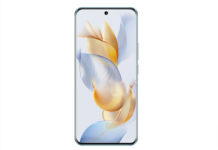The System Tray, also known as the Notification Area, is a vital part of the Windows 7 interface. It provides easy access to various applications, notifications, and system functions. This article will guide you through the process of accessing and using the System Tray in Windows 7. We’ll also discuss how to customize it to better suit your needs.
Understanding the System Tray
Before diving into the process of accessing the system tray, it’s essential to understand what it is. The System Tray is a part of the Windows taskbar at the bottom right corner of your screen. It contains icons for certain programs and system functions, like volume control, network status, and the clock. These icons provide real-time status information and quick access to certain functions or settings.
Characteristics of the System Tray
Most of the icons present in the System Tray belong to programs that run in the background, like antivirus software or system utilities. The icons offer two main interactions: left-clicking and right-clicking. Left-clicking typically opens the main window of the application, while right-clicking opens a context menu with more options.
Accessing the System Tray
Accessing the System Tray in Windows 7 is straightforward. First, locate the taskbar, typically located at the bottom of your screen. The System Tray is the part of this taskbar located on the right side, next to the clock.
Interacting with System Tray Icons
You can interact with each icon in the System Tray by either left-clicking or right-clicking them. The left-click generally opens the application’s main window, and the right-click opens a context menu with various options, like settings, features, or the option to close the program.
Customizing the System Tray
One of the powerful features of Windows 7’s System Tray is its customizability. Here is a brief guide on how to manage which icons and notifications appear in your System Tray:
- Accessing Notification Area Icons settings: Right-click an empty space on the taskbar and select “Properties”. In the “Taskbar and Start Menu Properties” window that appears, click on the “Customize” button under the “Notification Area” section.
- Setting Icons and Notifications: Here, you’ll find a list of all the icons that can potentially appear in your System Tray. Next to each one, there’s a dropdown menu where you can choose one of the following options: “Show icon and notifications”, “Hide icon and notifications”, or “Only show notifications”. Choose the one that best suits your needs for each application.
Advanced System Tray Customization
For further customization, you can select the “Turn system icons on or off” link at the bottom of the window. This will take you to a page where you can toggle system functions like Clock, Volume, Network, Power, and Action Center.
Conclusion
The System Tray in Windows 7 is a powerful tool for accessing and managing background applications and system functions. Its easy accessibility and high customizability make it a vital part of your daily computer use. Understanding how to access and customize it will allow you to streamline your workflow and maintain a cleaner, more efficient workspace.




